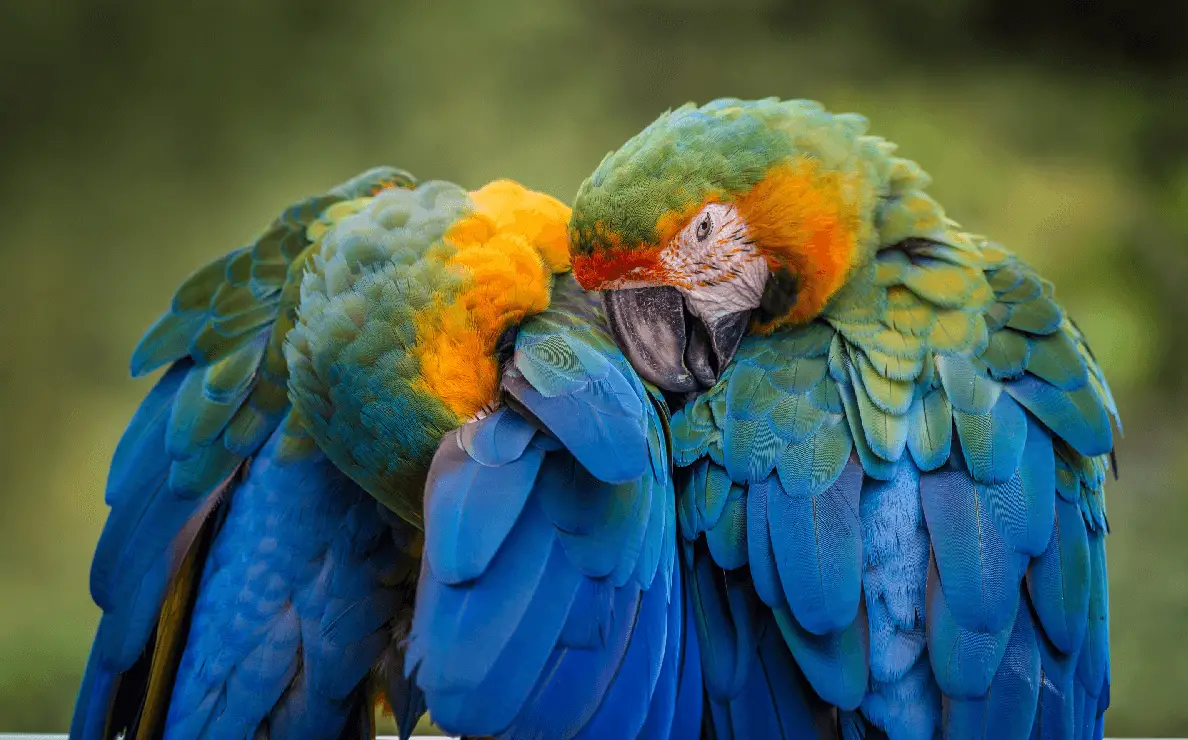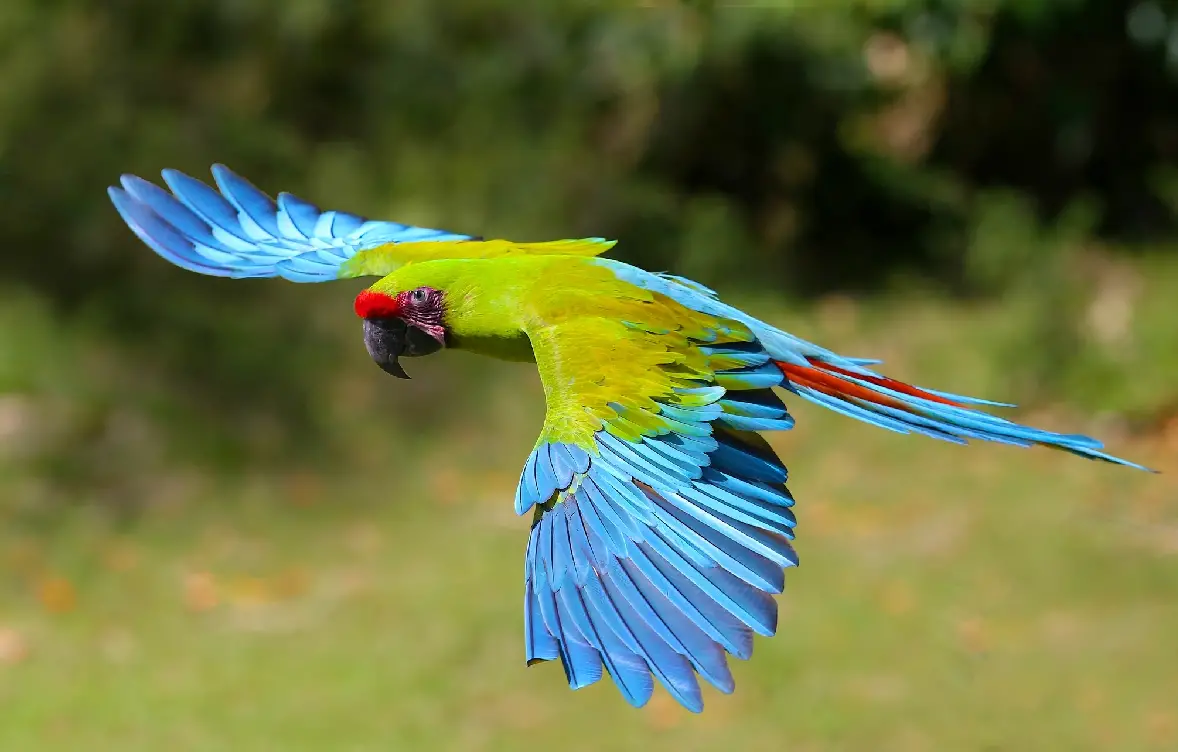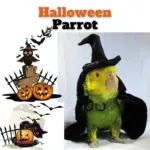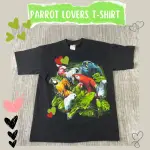
When we think of parrot’s defenses vs parrot predators, our imagination is immediately carried away and the film of our bird’s last ( biting ) attack unfolds. The parrot being, as we have seen, a prey animal, it would be illusory to imagine that aggression would be its first instinctive defensive reaction in the face of a threat, especially if the latter comes from a natural predator of the ‘species.
What are the Parrot predators?
Man
Humans are by far the largest predator of the macaw for many reasons. According to Animal Bytes, a site dedicated to information and animal discovery, humans hunt macaws for their feathers and meat, and they clandestinely sell their eggs and young people to sell in the pet industry. Humans also deforest the habitat of the macaw by cutting down trees and cultivating the land.
Eagles
Apart from human contact, the eagle is the main predator of the macaw in the wild. The harpy eagle feeds on the macaw while in the treetops and in flight. According to The Peregrine Fund, non-profit bird conservation, the harpy eagle’s hunting ability makes bird hunting easy to achieve due to its precise swooping ability. The eagle zooms in on the prey and never loses sight of it. Very rare that it loses its prey.
Snakes
Macaws don’t do well on the field, and they don’t land on the field unless they’re in large groups of 30 or more. Snakes like the boa constrictor and anaconda prey on macaws, like the blue and gold macaw. Snakes have to work quickly to slaughter their prey since the macaw can just fly far. Fortunately for the snake, the macaw is slow on her feet.
Domesticated Animals
Other animals at home, such as a dog or cat, pose a serious risk to macaws. If other pets are left unattended in the same room as your blue and gold macaw, they can cause serious damage to it. This is because macaws cannot tolerate significant blood loss. Birds do not carry much blood in their bodies, and they can quickly become impoverished, leading to death. To avoid death by another pet, your macaw should always be closely monitored.
Big cats
Tiger, leopard, snow leopard, clouded leopard, jaguar, lynx, and cheetah
Parrot Primary defense modes
Without the detection of predators on the territory, The modes of defense without predators on the territory are part of what is called primary defense. Primary defenses are those that decrease the chances of encountering or, worse yet, encountering a predator.

Height
The first defense strategy for the parrot consists precisely in not having to defend itself. The parrot is a flying animal, coupled with excellent climber agility. For the parrot, soaring towards the treetops, well sheltered under the canopy, is without a doubt synonymous with safety.
Contrary to what is ( too ) often conveyed, parrots do not perch in height to dominate their congeners and/or incidentally the humans with whom they share the territory. ( As I have often explained, African Grays do not perch in trees to dominate the lions that are below ).
These birds like to perch in height since this way of doing things reduces the risk of meeting or being noticed by a predator… and the same goes for the parrot living in our houses. Nothing like a good, very high, and very safe pole to take a little snooze in the afternoon or to gauge the quality of a visitor in the house.
It would be wrong to believe that the parrot tries to dominate the human when he perches in height so that the latter cannot join him there … In a case of dissent on the part of the parrot, the flight at altitude is simply taking a strategic position to escape a constraint on the part of your human, such as returning to the cage or fitting the harness …
Gregariousness
Parrots are very gregarious animals for most species. They live in society all year round and not just during the breeding season. Group vigilance is far more effective.
The formation of social groups is determined, among others, by three fundamental factors:
- Food research
- The reproduction
- Security or defense against predators
Group living ensures the safety of individuals: predators prefer to prey on isolated prey rather than try their luck with an entire group.
In addition, some species of parrot use a so-called “sentry” system. When there is a threat, the sentries utter very distinctive and recognizable alert calls, and the entire group flies away in “droves”, creating much confusion for the predator.
Here, a flock of parrots is considered to form a social group when they:
- Fly together at approximately the same speed and altitude;
- Forage together at the same feeding points;
- Meet in the same dormitory to spend the night.
Monospecific groups
This principle is valid for monospecific species as well as for multispecific groups
In monospecific groups, homogeneity is a very effective defense strategy. Since most of the species in this group feed partially on the ground, the best defense, especially against predators from the sky, is the identical appearance of all members of the group. It is indeed very confusing for a predator to easily spot a prey inside a large mass of uniform color and above all, to “focus” on a single individual.
On the other hand, in multispecies groups, which are mostly arboreal, color homogeneity is less important since they are most of the time protected by a dense cover of leaves. The birds of these species form smaller social groups, in order to guarantee the resources of the territory, but all the same form alliances with other species, with the aim of increasing the number of individuals in the group.
By allying with different species, there is less competition for food and for nests, since they have dietary peculiarities that do not hinder those of other parrot species. And the sharing of nesting areas does not pose a problem either since the species are of different sizes. Through these alliances, these groups still benefit from the system of sentinels and multi-party surveillance.
The colors
Parrots have developed over the course of their evolution, peculiarities of plumage colors that make them practically invisible to the eyes of parrot predators.
The homochromy of the green parrot’s camouflage is no mystery to anyone. In the forest, under the cover of trees, it is still the best color to wear if you want to go unnoticed. The same goes for reds, oranges, and yellows which blend easily with the flora of a tropical setting.
Gray birds, such as rosy cockatoos and African grays, have a particular visual advantage, according to ornithologist Sam Foster, on very sunny days. She noticed that the silvery of their plumage acted like a mirror by reflecting the light rays of the sun, momentarily obscuring these birds from the eyes of parrot predators when in flight.
And at the opposite end of the spectrum, white cockatoos create, according to her, what she calls “visual bewilderment ” against the blue background of the sky when they fly in groups on sunny days.
Nature has provided prey animals with very effective defense systems that allow them to avoid the enormous risks of confrontation.
On the other hand, bad meetings are unfortunately not always avoidable.

Defense modes in Presence of predators on the territory
The secondary defenses are manifested when there is a predator presence in the territory. Secondary defense reactions only appear when the bird has spotted a predator and these reactions have only one goal: to escape any form of confrontation with the latter.
The flight (abandonment)
In predatory animals, the instinct to fight or defend is often the first reflex act when faced with a threat or aggression. The instinct to flee comes second if the aggressor appears to be advantaged in any way, in order to prevent a fight where losses would be too costly. In parrots, which are prey animals, the opposite is true. No matter the threat, the first option used as a defense will always be flight, no matter how dangerous.
We must not lose sight of the fact that the prey condition involves the risk for the parrot to be caught by a predator at any time and during any daily activity of its life ( which is quite difficult for us to imagine. who are parrot predators and generally live well protected from harm ). We have no idea what survival as a prey animal can look like. It is for this reason, among other things, that parrots are naturally so “suspicious” of what is unknown (a situation, human, other animal or object ), and that they seem to us to be animals so “nervous”, so quick to react, at least if we compare them to our domestic dogs or cats.
The parrot can neither attack nor fight. His first defensive reaction is to flee; it is one of the states of emergency of instinct. It is its main survival strategy and practically the only one really effective in its natural environment.
In a context of captivity, faced with a threatening situation, it is when the bird is unable to react according to the prescriptions of its instincts ( flight feathers cut, locked in a cage or caught in a corner ), that it risks biting, reflexively, anyone or anything within range of its beak, even its human pet. A parrot in a state of panic thinks it really is fighting for its survival and, believe me, it is not anything, at this moment: the prey is under intense stress that it is very difficult for us to imagine.
Stillness
When a predator ( a hawk or raptor ) is approaching and the parrot is momentarily removed from its group, that it cannot flee without drawing attention to itself, or even, if it cannot taking refuge under the cover of trees or other environmental protection, it instinctively knows that a single bird is the prey of choice for a flying predator. He will therefore decide at this moment not to move, to remain perfectly still, hoping with all his being not to be noticed.
This immobility behavior is frequently observed in the flight feather-trimmed pet parrot when it feels threatened or when other parrots give a warning call. An example: while all the parrots in the household fly away, Étienne, my blue-fronted Amazon, literally freezes in place when one of my parrots gives a cry of alarm. This bird cannot escape by flying since it once had a broken wing. Étienne does not fly… so… he “freeze”!
Inhibition of action
This is what pushes the bird to play dead when it knows it has no chance of getting out of an attack alive. At this time, there are metabolic changes such as slowing down of breathing and sudden depression which leads to prostration. The bird appears to be really dead.
If the predator no longer feels its prey, then it may release its grip, and that is when the bird will try to break free and run away. One in 100 chances it will work, but it’s worth a try …
The deviation
The deflection of an attack is when the bird distracts the predator’s attention, either by pretending to be injured itself or by harassing the predator, in order to protect its nest or another individual in the group who is injured or unable to flee. This latter behavior is particularly noted in cockatoos.
The threat ( parade )
The threat usually precedes the confrontation, but the threat can disappear by learning, which is often the case with “domestic” parrots.
In the wild, this kind of warning impresses few parrot predators and is generally ineffective. Displays only intimidate other birds in the group, humans in a pinch, but do not affect the determination of raptors, snakes, or feral cats.
The response
Retaliation is the ultimate defense, the last resort. This is the ultimate option that the parrot will choose to defend itself and it will only resort to if there is really no opportunity to escape and it knows its life is truly in danger. At this moment, the response is excessively violent and the parrot will invest all its energy in it since it knows that it has little chance of escaping alive from the aggression, the motivation of the attacker is generally to kill it and then s to feast on it. The main defense weapon that the parrot will use is, as you can imagine, its powerful beak.
Most parrots, regardless of size, are very vulnerable to predation because they cannot fight or defend themselves and, faced with real aggression from which they cannot escape … certain species, who knows why to turn around on the back. Some observers interpret this gesture as a position of defense and others as a posture of abandonment, but whatever the reason, the fact remains that the parrot thus positioned is in the impossibility of fleeing. The parrot adopts this extreme attitude when it knows that the outcome of the fight will be unfavorable to it.
It would be desirable that in our homes, parrots never had to defend themselves from anyone or anything. The absence of parrot predators on the territory is one of the indisputable advantages of domesticity. It is up to us humans to know the innate needs of our birds as well as the attitudes to adopt towards them, in order to avoid being perceived as the “super-predator” of the surroundings.




















